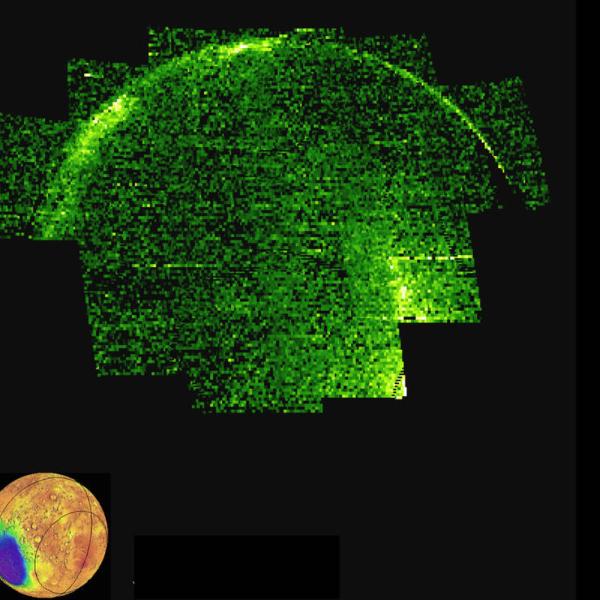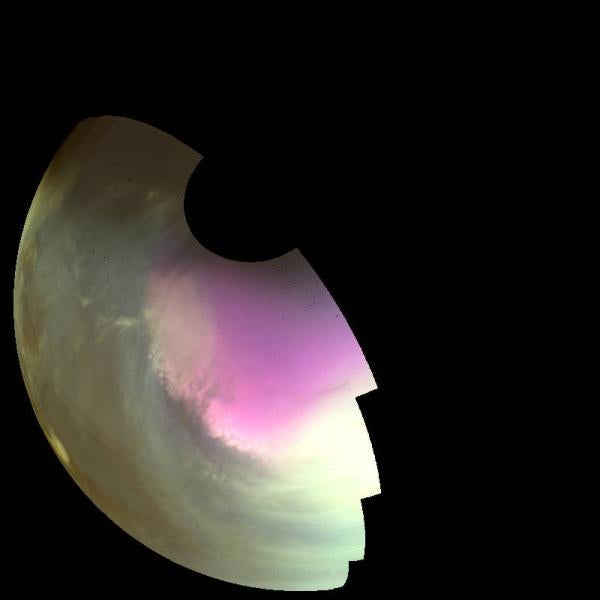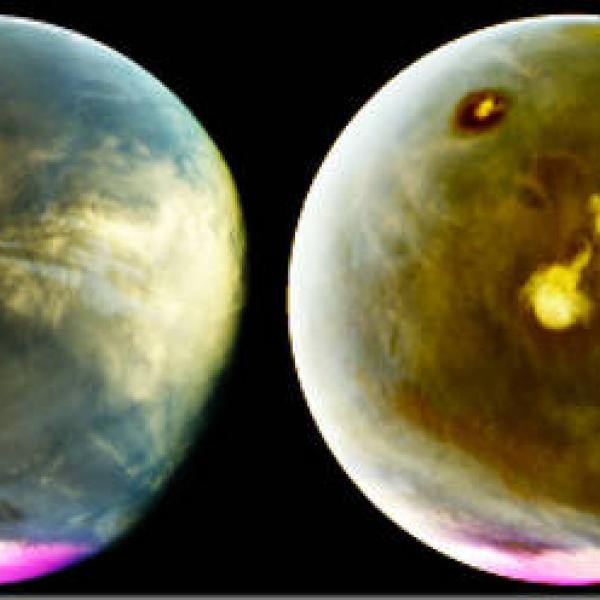MAVEN gives unprecedented view of Mars
New global images of Mars from NASA’s MAVEN mission being led by CU Boulder show the ultraviolet glow from the Martian atmosphere in unprecedented detail, revealing dynamic, previously invisible behavior.
Image 1: This image of the Mars night side shows ultraviolet emission from nitric oxide (abbreviated NO). The emission is shown in false color with black as low values, green as medium, and white as high. These emissions track the recombination of atomic nitrogen and oxygen produced on the dayside, and reveal the circulation patterns of the atmosphere. The splotches, streaks and other irregularities in the image are indications that atmospheric patterns are extremely variable on Mars' nightside. The inset shows the viewing geometry on the planet. MAVEN's Imaging UltraViolet Spectrograph obtained this image of Mars on May 4, 2016 during late winter in Mars Southern Hemisphere.
Image 2: This ultraviolet image near Mars’ South Pole was taken by MAVEN on July 10 2016 and shows the atmosphere and surface during southern spring. The ultraviolet colors of the planet have been rendered in false color, to show what we would see with ultraviolet-sensitive eyes. Darker regions show the planet's rocky surface and brighter regions are due to clouds, dust and haze. The white region centered on the pole is frozen carbon dioxide (dry ice) on the surface. Pockets of ice are left inside craters as the polar cap recedes in the spring, giving its edge a rough appearance. High concentrations of atmospheric ozone appear magenta in color, and the wavy edge of the enhanced ozone region highlights wind patterns around the pole.
Image 3: MAVEN's Imaging UltraViolet Spectrograph obtained these images of rapid cloud formation on Mars on July 9-10, 2016. The ultraviolet colors of the planet have been rendered in false color, to show what we would see with ultraviolet-sensitive eyes. The series interleaves MAVEN images to show about 7 hours of Mars rotation during this period, just over a quarter of Mars' day. The left part of the planet is in morning and the right side is in afternoon. Mars’ prominent volcanoes, topped with white clouds, can be seen moving across the disk. Mars’ tallest volcano, Olympus Mons, appears as a prominent dark region near the top of the images, with a small white cloud at the summit that grows during the day. Olympus Mons appears dark because the volcano rises up above much of the hazy atmosphere which makes the rest of the planet appear lighter. Three more volcanoes appear in a diagonal row, with their cloud cover merging to span up to a thousand miles by the end of the day. These images are particularly interesting because they show how rapidly and extensively the clouds topping the volcanoes form in the afternoon. Similar processes occur at Earth, with the flow of winds over mountains creating clouds. Afternoon cloud formation is a common occurrence in the American West, especially during the summer.
(Photo credits: NASA/MAVEN/University of Colorado)





